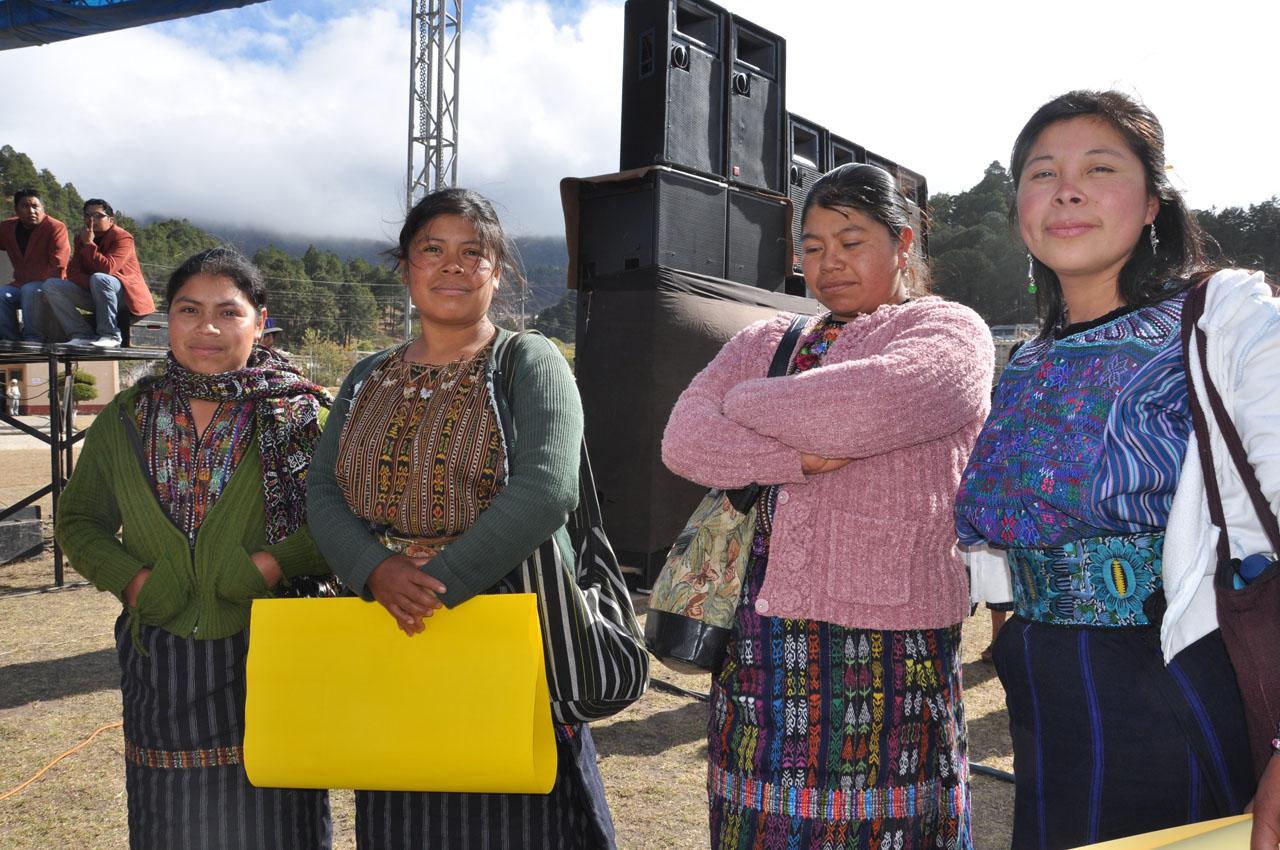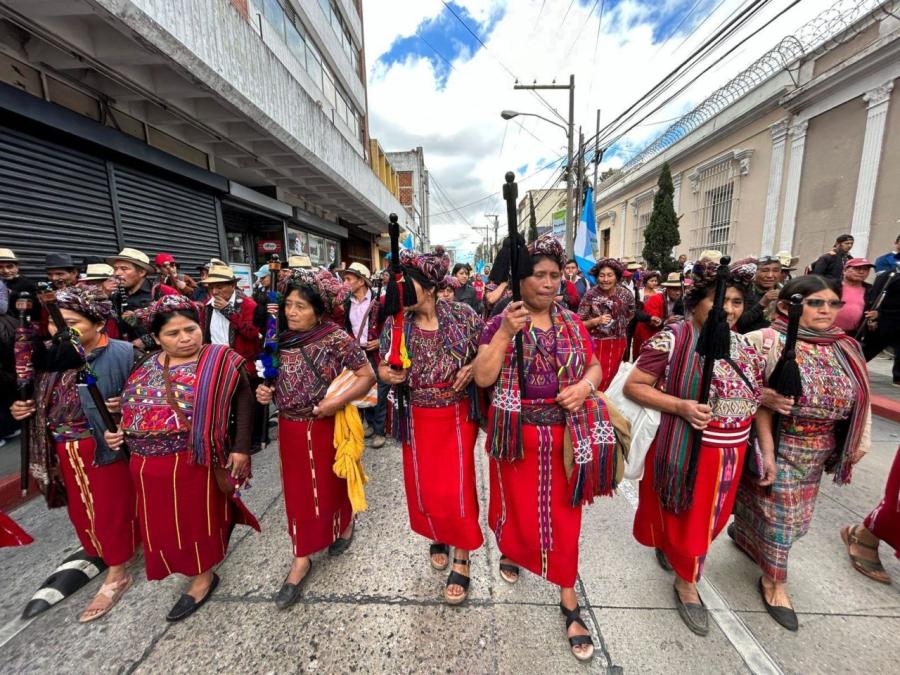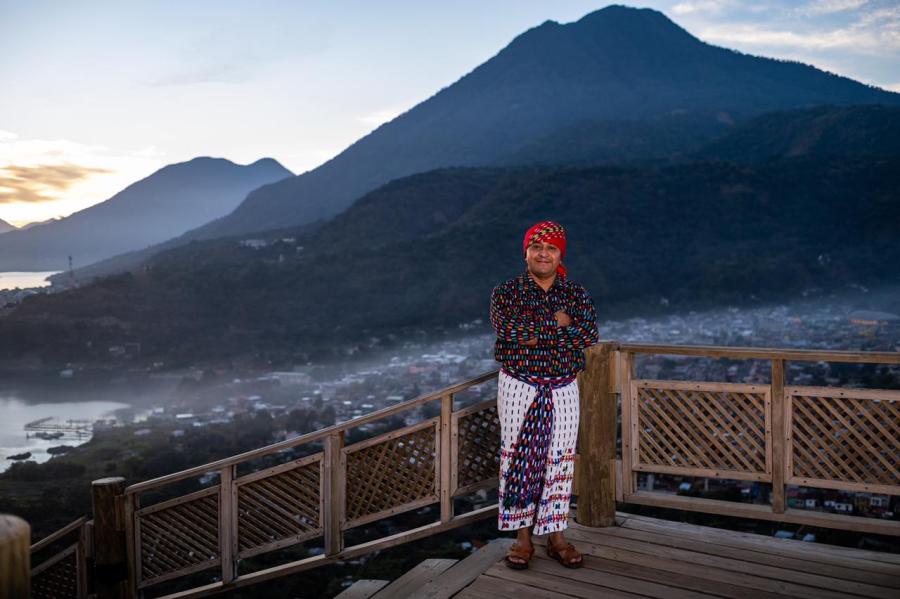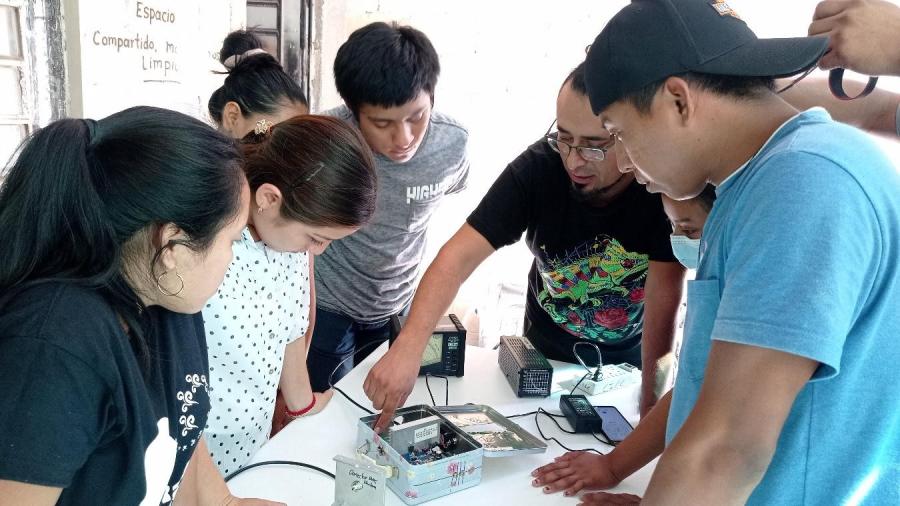Well before the sun rose on Tuesday, March 13, 2012, I maneuvered my trusty white Mazda pickup up the narrow streets of San Mateo, Quetzaltenango until I arrived in front of Radio Doble Via, a community radio station founded and run almost exclusively by young people. I had come to meet my friends Isa, Elizabeth, Rony and others members of Doble Vía’s all-volunteer staff, so that we could travel together to the nearby city of Totonicapán. We were going to document a day-long public hearing where representatives of Guatemala's indigenous communities would present their concerns to the United Nations High Commissioner on Human Rights, Navi Pillay, who was making a brief visit to Guatemala.
We had a double mission: several community radio stations, including Doble Via, would be covering the event as journalists, or broadcasting it live, but also the community radio movement was one of about 20 groups invited to testify before the Commissioner and other officials – as well as the thousands in the audience. One of our compañeros, Rosendo Pablo from Xob'il Yol Qman Txum in Todos Santos Cuchumatán, would be representing us. And there was a third, if unofficial, mission – an opportunity to see, embrace and chat with colleagues from community radio stations throughout the country who had made the trek to Totonicapán, and share this historic moment.
In the sharp morning light, an honor guard of traditional indigenous leaders from Totonicapan’s 48 communities, carrying their ceremonial black staffs, greeted us at the entrance, and we quickly moved to secure a good location for the radio and video equipment. Isa, Elizabeth and the other young women from Doble Via laughed and chatted as we set up the tripods. My job was to take still photographs, and I made sure to include photos of the Doble Via crew, and also representatives from some of the other radio stations. At one point, Isa turned to me, laughing, and asked, “When are you putting those photos up on Facebook?” And, in fact, during a lull in the proceedings, I pulled out my computer, propped it on a folding chair, installed my USB modem, logged onto Facebook and posted a brief update about the unfolding event.
My mention of Facebook is not a gratuitous gesture designed to demonstrate how “in touch” or hopeless (depending upon your perspective) I am, but rather as an indication of the ways that social media has been integrated into daily life in what anthropologist Anna Tsing calls “out of the way places” like the rural communities in the Guatemala highlands where most of the community radio stations are located, and also, of necessity, into my ethnographic fieldwork.
I spent 2011 in Guatemala as a Fulbright Scholar, and the research project that evolved during that year focuses on the representation and self-representation of Maya women, with a special emphasis on community radio. I worked closely with one radio station, but became involved with the larger national movement, which I view as part of the vanguard in the struggle for indigenous rights in post-conflict Guatemala. Social media, and particularly Facebook, played an important role in our work. Community radio stations are based in predominantly indigenous areas that are off the radar screen of politicians and elites. They function with limited resources and often rely upon outdated donated equipment. They are devoted to cultural preservation, often broadcasting in Maya languages. And at the same time, they are keenly aware of the potential of the Internet and social media. USB modems cost between $22 and $40, depending upon the speed, and many stations have websites and livestream their programs. They use cell phones or Skype to do remote broadcasts. And both the stations, and many of volunteer broadcasters, are on Facebook. It has become a tool for people in the radio movement to communicate with each other, and report local news not covered in the mainstream media.
When I reluctantly left Guatemala in January, my research was hardly completed, and even before my departure. I had already made plans to return during our spring break. Originally, I had booked a flight for Guatemala when break started on March 16. But in early March, one of my community radio compañeros (comrades), posted something on Facebook about the upcoming visit of the UN High Commissioner. I hadn’t known anything about it, but after getting more information through several email exchanges and Facebook chats I decided to move up my trip so that I could be a participant-observer alongside them. As we packed up equipment at the end of the event, several compañeros reminded me to post the photos on Facebook, so that they could see them and share them. Facebook has become, for them, a way of publicly documenting history.
Since I returned to the U.S., social media have allowed me to maintain frequent, if not daily contact, with the community radio movement in Guatemala, and keep abreast of important developments, such as a meeting with the President of Guatemala regarding a proposed law that would grant legal status to community radio stations. Even as I drafted this article in late April, I got updates about a large protest against mining operations in the highlands, and I have promised to post a Spanish translation of this article on the community radio movement’s Facebook page.
Learn more about the Community Radio Project,
here.




